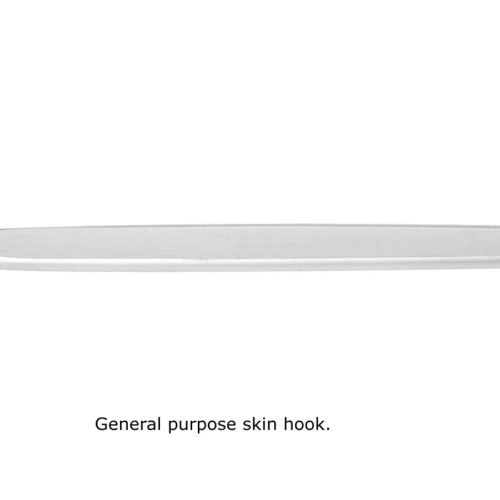Choosing the Right Skin Hook for Your Surgical Needs
Choosing the Right Skin Hook for Your Surgical Needs
Blog Article
In the realm of surgical instruments, precision and control are paramount. Skin hooks, though often overshadowed by more prominent surgical tools, are indispensable in various procedures. These simple yet effective instruments skin hook play a critical role in surgeries that require delicate handling of tissues.

What is a Skin Hook?
A skin hook is a small surgical instrument with a slender handle and a sharp, pointed hook at one end. It is specifically designed for lifting and retracting delicate tissues, such as skin and thin subcutaneous layers, during surgical procedures. Skin hooks are typically made from high-quality stainless steel, ensuring durability, corrosion resistance, and ease of sterilization. They are available in single or double-hook designs, allowing surgeons to choose the most suitable option for the procedure at hand.
Types of Skin Hooks
Skin hooks come in various sizes and designs to accommodate different surgical needs. The most common types include:
- Single Hook: Features a single pointed hook, ideal for precision tasks where minimal tissue engagement is required.
- Double Hook: Equipped with two hooks, offering greater control and stability during tissue retraction.
- Fine Hooks: Designed for microsurgery or procedures involving delicate tissues, such as in plastic or reconstructive surgery.
- Heavy-Duty Hooks: Used for thicker or tougher tissues, such as in orthopedic or general surgeries.
Each type serves a specific purpose, making skin hooks versatile tools in the surgical field.
Applications of Skin Hooks
Skin hooks are widely used across multiple surgical specialties, including:
- Plastic and Reconstructive Surgery: Skin hooks are indispensable in procedures such as facelifts, rhinoplasty, and skin grafting, where precise tissue manipulation is crucial.
- Dermatological Surgery: For procedures like mole removal or skin cancer excisions, skin hooks provide gentle yet effective retraction of the skin.
- Orthopedic Surgery: Skin hooks are used to retract skin and soft tissues to access underlying structures during bone and joint surgeries.
- ENT Surgery: These instruments aid in delicate procedures involving the face and neck, such as cleft palate repair or thyroidectomy.
By providing secure and controlled retraction, skin hooks allow surgeons to perform intricate procedures with greater accuracy.
Advantages of Using Skin Hooks
The use of skin hooks offers several advantages:
- Precision: The sharp, pointed design of the hook ensures minimal trauma to surrounding tissues, making them ideal for procedures requiring fine control.
- Versatility: With various designs available, skin hooks can be used in a wide range of surgeries, from cosmetic to orthopedic procedures.
- Ergonomic Design: Skin hooks are lightweight and easy to handle, reducing hand fatigue during prolonged surgeries.
- Durability: Made from high-quality materials, they are resistant to wear and corrosion, ensuring a long lifespan.
These benefits make skin hooks a reliable choice for surgeons seeking optimal performance and patient outcomes.
Care and Maintenance of Skin Hooks
To ensure the longevity and effectiveness of skin hooks, proper care and maintenance are essential. Key practices include:
- Cleaning: Skin hooks should be thoroughly cleaned after each use to remove blood, tissue, and other residues.
- Sterilization: Autoclaving is the preferred method to ensure complete sterilization and prevent cross-contamination.
- Inspection: Regularly inspect skin hooks for signs of wear, such as bent hooks or dull points, and replace them as needed.
Adhering to these practices helps maintain the quality and safety of the instrument.
Conclusion
Skin hooks may be small, but their impact on surgical precision and patient care is significant. From plastic surgery to orthopedic procedures, these versatile instruments are indispensable in ensuring optimal outcomes. Their ergonomic design, durability, and ability to minimize tissue trauma make them a trusted tool in operating rooms worldwide. As advancements in surgical techniques continue, the humble skin hook will remain an essential instrument in modern medicine.
Whether you’re a surgeon or a medical professional looking to expand your toolkit, investing in high-quality skin hooks is a decision that enhances both your practice and patient care. Report this page